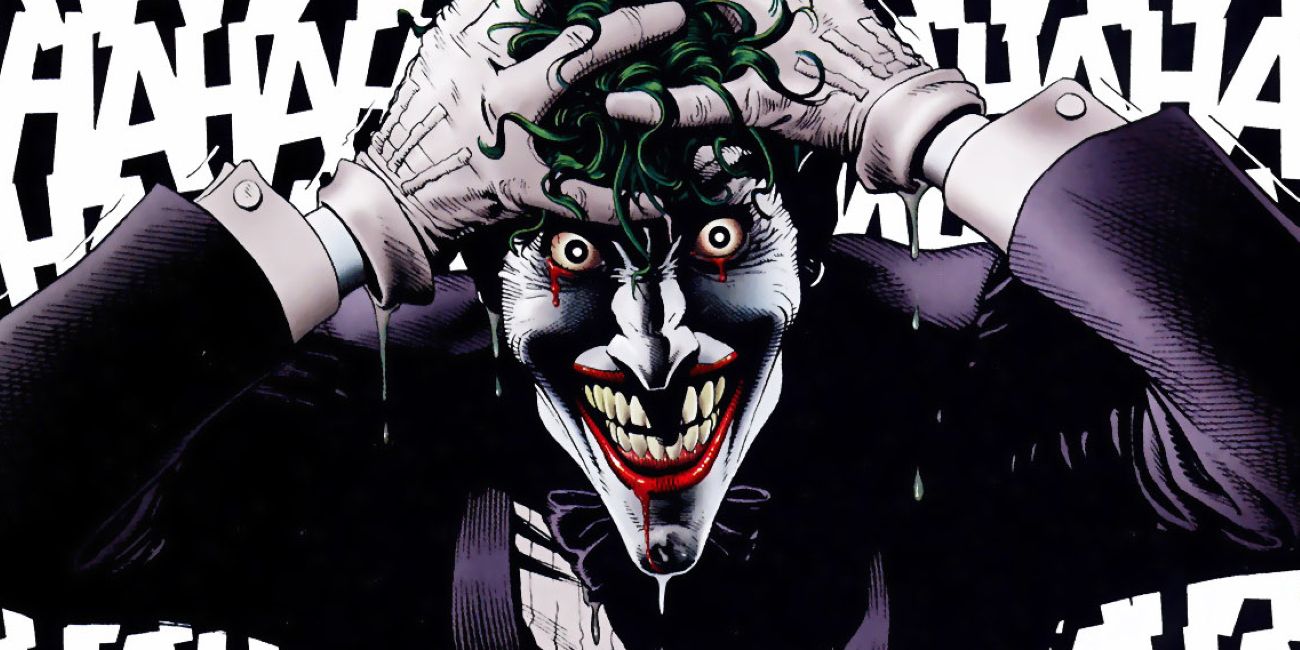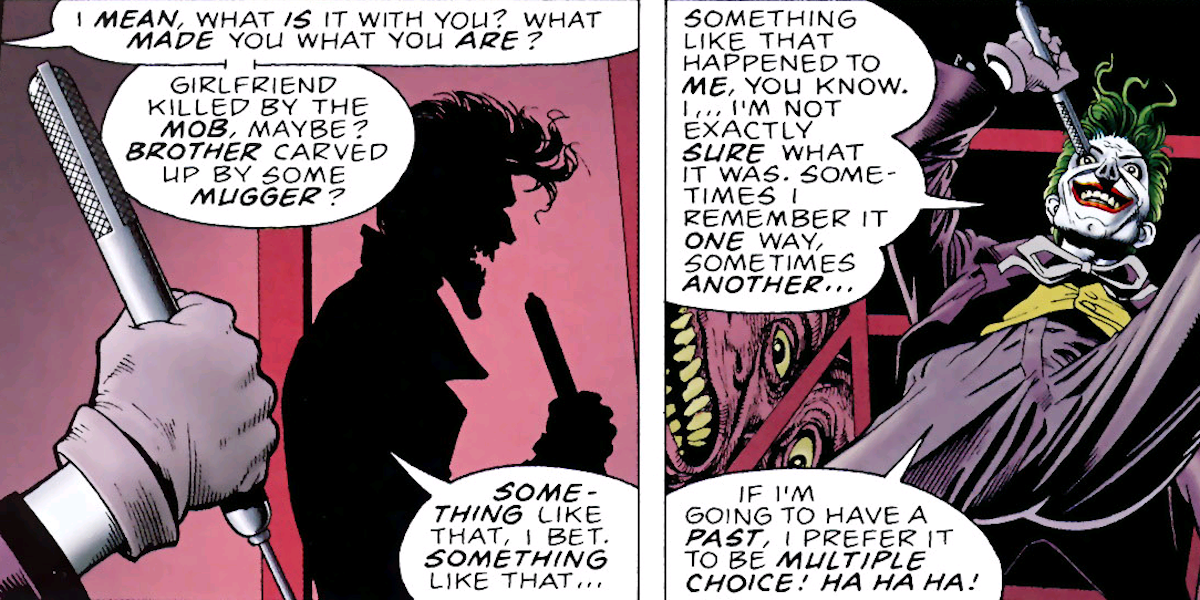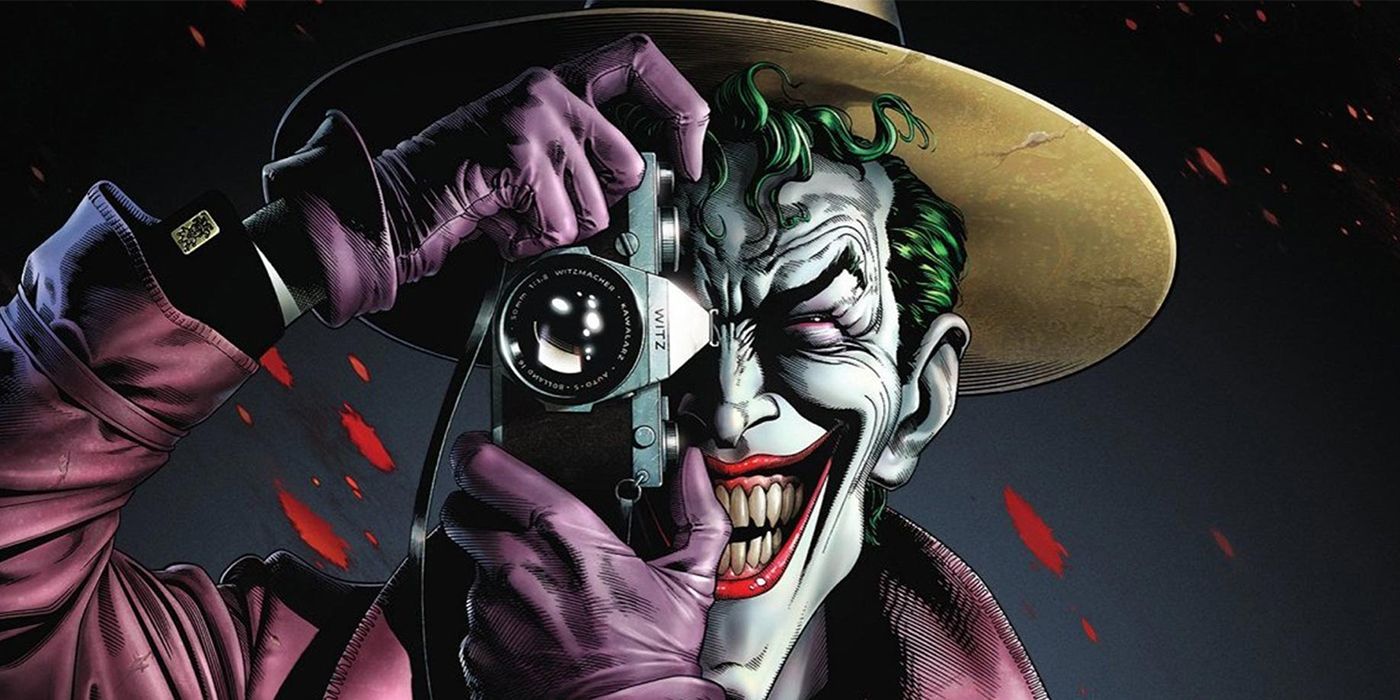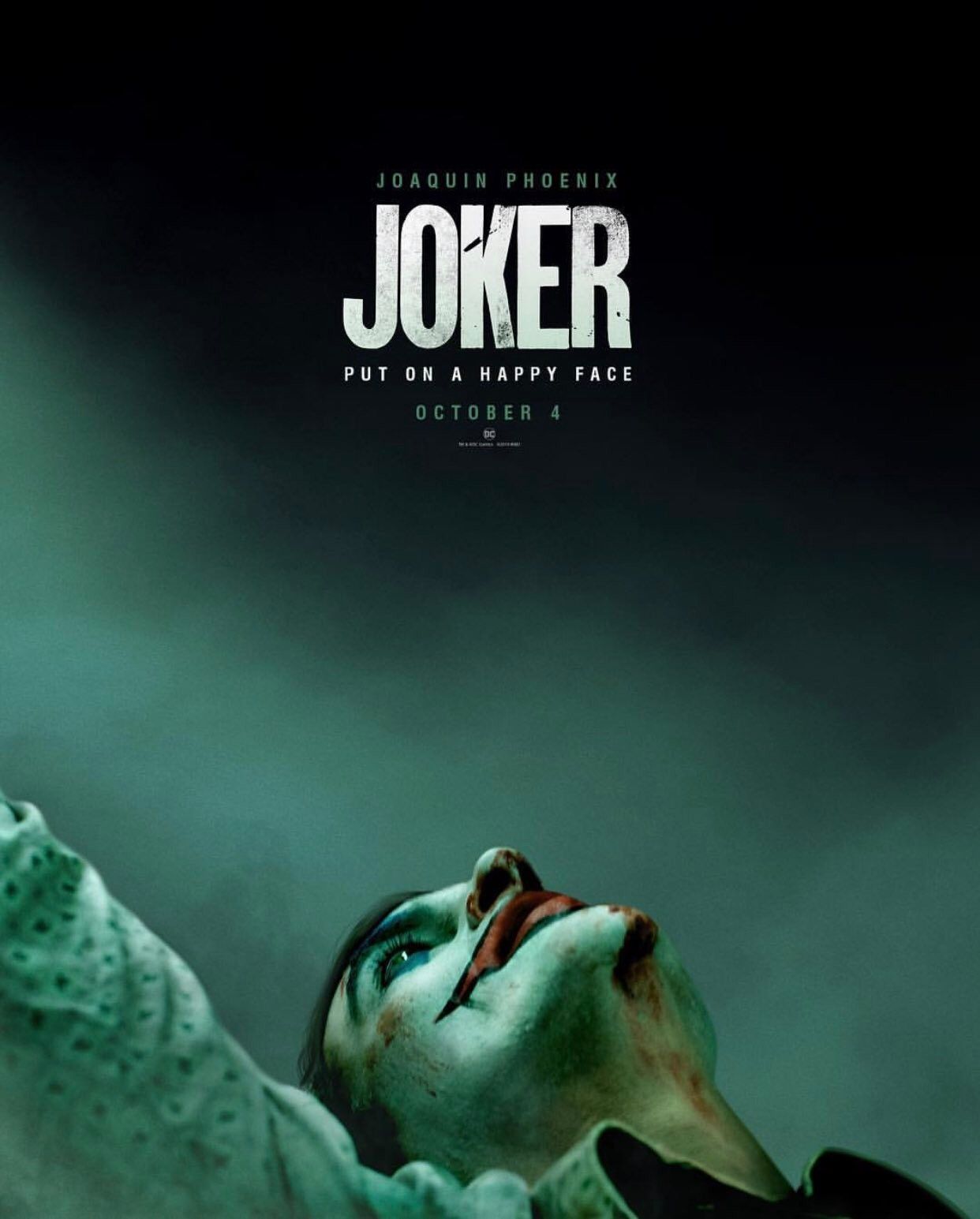Millions of moviegoers have witnessed the origins of The Joker thanks to Todd Phillips and Joaquin Phoenix, but even before the film was made, it was being compared to Alan Moore's and Brian Bolland's famous one-shot graphic novel, Batman: The Killing Joke. The graphic novel's original purpose was to exist independently from the ongoing canon of the Batman universe... but that didn't stop many of its element from becoming DC canon soon after its publication.
The two main plot points that made their way from The Killing Joke into current canon are The Joker's origins as a failing stand-up comedian, and his attack on Barbara Gordon/Batgirl, leaving her paralyzed from the waist down. In fact, DC Comics seemed to almost instantly take the events of the one-shot into their general canon. In the same year that the graphic novel was published (1988), the heroine was retired in Batgirl Special #1 and reemerged as Oracle when she finally reappeared in a separate, Suicide Squad series. The two graphic novels were only published four months apart, with The Killing Joke released in March of '88 and Batgirl Special released in July.
The Joker's stories never required an origin story (and some argue still doesn't), but his failed comedy career is referenced outside of comic books as well. Within Batman: The Animated Series, an episode entitled "Make 'Em Laugh" mentions his attempts at stand-up. The Batman: Arkham video game series also alludes to this origin, as the Joker tells Hugo Strange the same story from The Killing Joke (though Hugo dismisses it as likely fake).
The reboot of DC Comics with the New 52 signaled the end of this one-shot affecting Barbara Gordon's fate as Batgirl. She was quickly re-established as the only Batgirl, having healed four years after the attacks presented in The Killing Joke. Though she healed, this still makes the events canonical as she sustained critical injuries through the plot. But the consistent use of events from Moore and Bolland's non-canonical graphic novel beg the question: why does DC Comics want to make this plot canon, even though it was explicitly intended to exist on its own?
For the most part, the answer is most likely due to the critical reception of the piece. With an Eisner Award and general reputation as "the greatest Joker story ever told" by many critics, and typically one of the very best Batman stories as well, earning its hallowed place among The Dark Knight Returns, and Batman: Year One. With Alan Moore as the one-shot's writer, it was no surprise that it was well-received. Fans of graphic novels easily recognize Moore from his iconic pieces, such as V for Vendetta and Watchmen. The quality writing combined with the Batman universe made the story compelling (while Bolland made it horrifying), and it is often credited with making the Joker three-dimensional, as it shows him at his weakest, most innocent, and eventually, his most vile.
This is precisely why DC Comics will continue to pull from the meant-to-be one-shot. The origin of the Joker as a desperate failure, stricken with grief over the loss of his wife and unborn child makes some sense of his twisted fate. In the face of such tragedy, he understandably snaps, adopting a persona and lifelong mission not unlike Bruce Wayne's. A parallel unforgettably condensed in Joker's famous line of dialogue, having traumatized Commissioner Gordon to prove a point:
All it takes is one bad day to reduce the sanest man alive to lunacy. That's how far the world is from where I am. Just one bad day. You had a bad day once, am I right? I know I am. I can tell. You had a bad day and everything changed.
While Barbara was made a victim of Joker in the one-shot, it was accepted as canon because it shows her resilience in the face of oppression and tragedy, as well as her genius skillset that comes into play as Oracle. The best stories have used it to make her three-dimensional as well, showcasing her work ethic and her intelligence but also recognizing her trauma. And it's that kind of good writing and well-rounded characters that are sure to keep Batman: The Killing Joke in and out of DC Comics plots for years to come.




